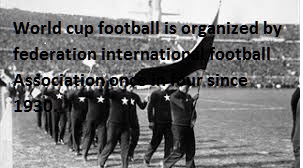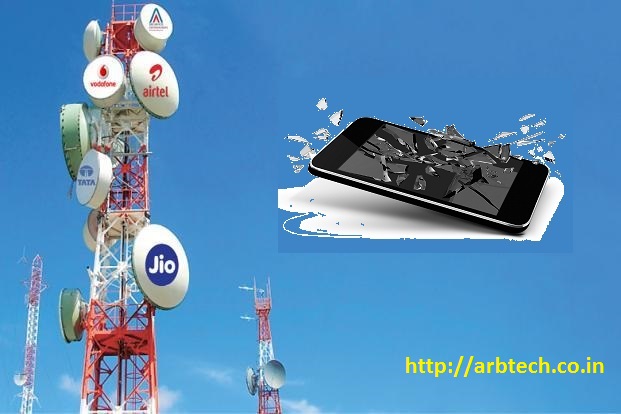Complete guide to Hydraulics working and its application and Hydraulic Pin Pusher

CHAPTER 1 INTRODUCTION
The basic idea behind any hydraulic system is very simple; Force that is applied at one point is transmitted to another point using an incompressible fluid. The fluid is almost always an oil of some sort. The force is almost always multiplied in the process. A Simple hydraulic system consisting of two pistons and an oil-filled pipe connecting them.
Fig: 1.1 Hydraulic Basics
In this drawing, two pistons (red) fit into two glass cylinders filled with oil (light blue) and connected to one another with an oil-filled pipe. If you apply a downward force to one piston (the left one in this drawing), then the force is transmitted to the second piston through the oil in the pipe. Since oil is incompressible, the efficiency is very good -- almost all of the applied force appears at the second piston. The great thing about hydraulic systems is that the pipe connecting the two cylinders can be any length and shape, allowing it to snake through all sorts of things separating the two pistons. The pipe can also fork, so that one master cylinder can drive more than one slave cylinder if desired. The neat thing about hydraulic systems is that it is very easy to add force multiplication (or division) to the system. If you have read How a Block and Tackle Works or How Gears Work, then you know that trading force for distance is very common in mechanical systems. In a hydraulic system, all you do is change the size of one piston and cylinder relative to the other, as shown here. The piston on the right has a surface area nine times greater than the piston on the left. When force is applied to the left piston, it will move nine units for every one unit that the right piston moves, and the force is multiplied by nine on the right-hand piston.
Hydraulic machines are machinery and tools that use liquid fluid power to do simple work. Heavy equipment is a common example. In this type of machine, hydraulic fluid is transmitted throughout the machine to various hydraulic motors and hydraulic cylinders and which becomes pressurized according to the resistance present. The fluid is controlled directly or automatically by control valves and distributed through hoses and tubes. The popularity of hydraulic machinery is due to the very large amount of power that can be transferred through small tubes and flexible hoses, and the high power density and wide array of actuators that can make use of this power. Hydraulic machinery is operated by the use of hydraulics, where a liquid is the powering medium. For the hydraulic fluid to do work, it must flow to the actuator and/or motors, then return to a reservoir. The fluid is then filtered and re-pumped. The path taken by hydraulic fluid is called a hydraulic circuit of which there are several types. Open center circuits use pumps which supply a continuous flow. The flow is returned to tank through the control valve's open center; that is, when the control valve is centered, it provides an open return path to tank and the fluid is not pumped to a high pressure. Otherwise, if the control valve is actuated it routes fluid to and from an actuator and tank. The fluid's pressure will rise to meet any resistance, since the pump has a constant output. If the pressure rises too high, fluid returns to tank through a pressure relief valve. Pump pressure always equals the pressure setting for the pump regulator. This setting must cover the maximum required load pressure.
Hydraulic hose is graded by pressure, temperature, and fluid compatibility. Hoses are used when pipes or tubes cannot be used, usually to provide flexibility for machine operation or maintenance. Seals, fittings and connections Components of a hydraulic system [sources (e.g. pumps), controls (e.g. valves) and actuators (e.g. cylinders)] need connections that will contain and direct the hydraulic fluid being used without leaking or losing the pressure that makes them work. In some cases, the components can be made to bolt together with fluid paths built-in. In more cases, though, rigid tubing or flexible hoses are used to direct the flow from one component to the next. Each component has entry and exit points for the fluid involved (called ports) sized according to how much fluid are expected to pass through it.
The hydraulic pin pusher is another application of the double acting hydraulic cylinder, to inert the connex spring pin into its mounting. The connex spring pin is tubular slotted type of spring pin used for various applications.
CHAPTER 2 HYDRAULIC PIN PUSHER
2.1 DESCRIPTION
The concept of the hydraulic press is based on Pascal's theory, which states that when pressure is applied on fluids in an enclosed system, the pressure throughout the system always remains constant. In simple words, a hydraulic press is a machine that makes use of the pressure exerted on the fluids to crush something. Hydraulic presses are a powerful class of machine tools; they derive the energy they deliver through hydraulic pressure. Fluid pressure, in a particular chamber, can be increased or decreased by the use of pumps, and valves. Sometimes devices and systems may be used to increase the capacity of the pumps in more powerful presses. These presses can operate over a long distance and at a constant speed. Hydraulic presses are generally slower relative to other press machine types. This involves longer contact with the work; therefore the cooling of the work can be an issue when hot forming a part with hydraulic force. Hydraulic presses are capable of being the most powerful class of presses. Some may be as large as buildings, and can deliver awesome pressure. The largest hydraulic presses are capable of applying 75,000 tons, (150,000,000 lbs), of force.
Fig: 2.1 Hydraulic Pin pusher
2.1.1 What is hydraulic pin pusher?
Hydraulic pin pusher is a hydraulic device used to assemble the press fit parts. Inserting the connex spring into the body of pneumatic breaker for holding the component like operating lever, dolly block and latchet is one of the applications used in the project. It uses hydraulic energy for its operation, which is obtained from a hydraulic power pack.
In the current project we are dealing with a portable hydraulic pin pusher as shown in the figure, this pin pusher is specially develop to insert the different sizes of pin into an rigid body.
Fig: 2.2 Hydraulic Pin Pusher with support
This rigid body is the body of the pneumatic breaker which is a mining tool used for breaking rocks. The pin pusher can generate large amount of force on its piston end and this force is used to press fit the connex spring. The force should be higher as there is interference fit between pin and hole.
2.1.2 Circuit diagram
The below figure shows the circuit diagram of hydraulic pin pusher:-
Fig: 2.3 Circuit diagram
In the figure to the left side shows the circuit diagram and the right side shows the actual diagram of hydraulic pin pusher. The double acting cylinder which is actuated by a 4/2 DCV (direction control valve) and the DCV is actuated by the push buttons. The pressurized fluid is supplied from the power pack consist of pump, prime mover, filter and pressure relief valve. As there is requirement of two position i.e. advance position and retraction so, the double acting cylinder with 4/2 DCV is selected for the application.
2.2 Construction & Working
2.2.1 Construction
The figure shows the construction of the hydraulic pin pusher. It consists of double acting hydraulic cylinder which is fastened into a C-frame. The high pressure line from power pack is connected to the hydraulic cylinder.
2.2.1.1 Components
1. Hydraulic cylinder: The double acting type of hydraulic cylinder is used in this pin pusher.
Fig: 2.4 Hydraulic Cylinder
A double-acting cylinder is a cylinder in which the working fluid acts alternately on both sides of the piston. In order to connect the piston in a double-acting cylinder to an external mechanism, such as a crank shaft, a hole must be provided in one end of the cylinder for the piston rod and this is fitted with a gland or 'stuffing box' to prevent escape of the working fluid. Double-acting cylinders are common in steam engines but unusual in other engine types. Many hydraulic and pneumatic cylinders use them where it is needed to produce a force in both directions. The hydraulic cylinders used in this specific project are manufactured by ENERPAC. The chart specifications of different cylinders are given as follows:
Table 2.1 Hydraulic cylinder specification
2. Frame: The frame is attached to an over head support, it consist of two handles for better flexibility for handling the pin pusher. The frame has two sub attachments, one for the hydraulic cylinder and another for the connex spring rest. These sub attachments are in the form of collars circular for the cylinder and rectangular with V-shape guide at its center for spring. The frame also provides housing for the push buttons as shown in the figure.
3. 4/2 DCV:
Four way and two position type of direction control valve is used for this system. A hydraulically operated DCV works at much higher pressures than its pneumatic equivalent. They must therefore be far more robust in nature so are precision machined from higher quality and strength materials. According to total number of entries or exits connected to the valve through which fluid can enter the valve or leave the valve there are types like two way, three ways, four way valves. Including the normal and working positions which a valve spool can take there are types like two position, three position and proportional valves. The spool (sliding type) consists of lands and grooves. The lands block oil flow through the valve body. The grooves allow oil or gas to flow around the spool and through the valve body. There are two fundamental positions of directional control valve namely normal position where valve returns on removal of actuating force and other is working position which is position of a valve when actuating force is applied. There is another class of valves with 3 or more position that can be spring centered with 2 working position and a normal position.
Fig: 2.5 4/2 DCV
Symbol
4. Power Pack: Following are the specification of power pack.
Primary drive sources could be alternating current (AC) from single or 3 phase motor, internal combustion engine or an air motor. These dictate the hydraulic power delivered to the oil and therefore control the flow and pressure limits. Pumps produce flow and are designed to do this at a pressure that the system restrictions demand. Hydraulic pumps are usually selected based on their suitability to produce flow, pressure rating, economy and noise. Hydraulics reservoirs are the storage vessel for the oil required to operate the hydraulic system components, such as hydraulic actuators or hydraulic motor, and ensure this oil is stored and maintained in the best possible condition. Common ancillary’s filler/breathers and drain ports, level gauge, level switches and inspection covers. Filtration is a critical part of a hydraulic power pack, ensuring wear is minimized and efficiencies are maintained. Basic suction strainers ensure the very largest of contaminants do not enter the pump. Pressure filters are normally configured at the pump outlet ensuring highly filtered oil enters the hydraulic system. Contamination within the system is filtered out by the return filter before it enters the hydraulic reservoir.
Fig: 2.6 Power Pack
5. Over head support (Hoist support):
It is the support provided for the frame. The support consist of a drum with steel rope, this rope is attached to the frame for better flexibility. Hoisting, moving and positioning with high accuracy can now be done using one crane with Enerpac integrated hydraulics. In many construction hoisting applications the hydraulic control of load movement makes the demand for more than one crane redundant. This integrated hydraulic solution turns hoisting into an efficient and cost effective handling and ensures better control of vertical transportation and load positioning – reduces costs of hiring additional cranes, assembling time and requires less space on the construction site. In conventional hoisting one crane is used for each lifting point.
6. Fixture: The fixture is used to place the body of pneumatic breaker in which the connex spring is to be press fitted
2.2.2 Working
First the pneumatic breaker is fastened rigidly to the fixture .The hydraulic fluid from the power pack at high pressure is supplied to the double acting cylinder. Hence for getting the advance stroke the push button 1 is operated due to which the direction control valve is set to position first. This is shown in the circuit diagram 2.2. The fluid at first position is supplied at the face of the piston which gives large amount of force at advance as compare to retraction force. For retraction stroke the is set to position first by operating the push button 2 this tends the pressurized fluid to move at rod end and thus retraction stroke is completed.
Therefore for inserting the pin into the mounting the push button first is operated and the pin is inserted into the assembly of the breaker. The push button second is operated just for the retraction of piston after the pin is inserted successfully. The first pin which is of lesser diameter requires less amount of force as compare to the spring pin of larger diameter. The details of the components which are to be handled are discussed in the next topic.
CHAPTER 3 COMPONENTS HANDLED
3.1 CONNEX Spring
Fig: 3.1 Connex Spring
CONNEX Spring Pins are longitudinally slotted with a staggered-toothed seam. The toothed design follows the elasticity modulus of the material. The teeth are staggered above their corresponding space widths to a specific degree. Upon insertion into the smaller receiving bore and the resulting compression of the material of the tension element, the teeth touch on one side only. The resulting combination of axial thrust with the radial acting spring force causes an increased surface pressure, and therefore, an increased seating capacity in the housing. The corrugated slot design of the spring pin provides much higher surface pressure against its housing than conventional straight slotted tension bushings. The radial force in combination with tangential force produced by our unique design provides a much higher seating capability which resembles an interference fit of a solid tubular steel bushing.
The CONNEX Principle, by virtue of its unique design, produces a high surface bearing pressure against the housing wall which results in a high seating capacity comparable to that of a solid bushing. In the CONNEX Principle, the teeth in the seam are offset by a certain measure. In the relaxed state, the bushing is oversized to the housing bore. However, upon insertion into the holding bore, the compression of the bushing allows the teeth to make contact on one side along the plane of the seam. The perspective drawing shows that the installed bushing has an operative radial and tangential force. As a result, there is high contact pressure between the bushing and housing. The higher the ratio between the bushing wall thickness and diameter, the more active is the CONNEX Principle.
3.1.1 Application of spring pin
Fig: 3.2 Applications
3.1.2 Material of spring pin (51CrV4)
Quenched and tempered steels are used for components subjected to high stresses where the combination of high strength, wear resistance and toughness is particularly important. We supply high grade steel as per EN 10083-2 as well as stainless steel according to EN 10083-1 and EN 10132-4, with also stand out for their high degree of purity. Typical applications are link plates, belt buckles, springs, steel caps for safety shoes, saw blades, knives and scissors. Quenching and tempering gives the materials their special properties. The user of these steel grades must make sure that his calculation, design and processing methods are appropriate for the material. Temperature control during quenching and tempering is essential to achieve the desired component properties; however, it must be matched to the respective application. This steel grade is supplied as input stock for cold rolling. As the melting and hot rolling conditions have an effect on further treatment at the customer, the customer should always state the intended use when placing an order.
Chemical Composition (in percent by weight)
Table: 2.1
Mechanical properties
Table: 2.2
Spring Pin 1:
Spring Pin 2:
Spring Pin 3:
3.2 Body of Pneumatic Breaker
It is a pneumatic tool that combines a hammer directly with a chisel. It is also called as Jackhammers. Hand-held jackhammers are typically powered by compressed air, but some use electric motors. Larger jackhammers, such as rig mounted hammers used on construction machinery. They are usually used to break up rock, pavement, and concrete.
Fig: 3.3 Pneumatic Breakers
A jackhammer operates by driving an internal hammer up and down. The hammer is first driven down to strike the back of the bit and then back up to return the hammer to the original position to repeat the cycle. The bit usually recovers from the stroke by means of a spring. The effectiveness of the jackhammer is dependent on how much force is applied to the tool.
Pneumatic drills were developed in response to the needs of mining, quarrying, excavating, and tunneling. The first "percussion drill" was made in 1848 and patented in 1849 by Jonathan J. Couch of Philadelphia, Pennsylvania In this drill, the drill bit passed through the piston of a steam engine. The piston snagged the drill bit and hurled it against the rock face. It was an experimental model. In 1849, Couch's assistant, Joseph W. Fowle, filed a caveat for a percussion drill of his own design. In Fowle’s drill, the drill bit was connected directly to the piston in the steam cylinder; specifically, the drill bit was connected to the piston’s crosshead. The drill also had a mechanism for turning the drill bit around its axis between strokes and for advancing the drill as the hole deepened. By 1850 or 1851, Fowle was using compressed air to drive his drill, making it the first true pneumatic drill.
The demand for pneumatic drills was driven especially by miners and tunnelers because steam engines required fires in order to operate and the ventilation in mines and tunnels was inadequate to vent the fires' fumes; there was also no way to convey steam over long distances (e.g., from the surface to the bottom of a mine); furthermore, mines and tunnels occasionally contained flammable explosive gases such as methane. By contrast, compressed air could be conveyed over long distances without loss of its energy, and after the compressed air had been used to power equipment, it could still serve to ventilate a mine or tunnel. In Europe since the late 1840s, the king of Sardinia, Carlo Alberto, had been contemplating the excavation of a 12-kilometer (7.5 mi) tunnel through Mount Fréjus in order to create a rail link between Italy and France, which would cross his realm. The need for a mechanical rock drill was obvious and this sparked research on pneumatic rock drills in Europe. A Frenchman, Cave, designed, and in 1851 patented, a rock drill that used compressed air; however, the air had to be admitted manually to the cylinder during each stroke, so it was not successful. In 1854, in England, Thomas Bartlett made and then patented (1855) a rock drill in which the drill bit was connected directly to the piston of a steam engine. In 1855 Bartlett demonstrated his drill, powered by compressed air, to officials of the Mt. Fréjus tunnel project. (In 1855, a German, Schumann, invented a similar pneumatic rock drill in Freiburg, Germany.) Bartlett’s drill was refined by the Savoy-born engineer Germain Sommeiller (1815-1871) and his colleagues, Grandis and Grattoni, by 1861. Thereafter, many inventors refined the pneumatic drill.
CHAPTER 4 FAILURE ANALYSIS
4.1 Overview of Failure Analysis
4.1.1 Types of Failures
- Failure of double acting cylinder.
- Failure of cylinder support.
- Failure of power pack to generate sufficient amount of pressure.
- Failure of pin spring to sustain much amount of force.
- Failure due to faulty bore of breaker body.
- Failure due to insufficient sealing which cause leakage by to high pressure of the hydraulic fluid.
- Failure due to manual handling.
- Failure due to incorrect maintenance time period.
4.1.2 Causes of Failure
The causes of failures are given below:
- Due to non-alignment of the axis of piston with the axis of spring pin.
- Incorrect design of the double acting cylinder.
- Lack of flexibility of the support.
- Change in the application.
- Material of pin spring.
- Sealing are not properly installed.
- Very high force beyond the capacity of the cylinder.
- Specification of power pack does not match with the application or requirements.
4.1.3 Effects
The causes which arises various effects on the system are:
- Non-alignment tends to bend the piston rod.
- The bending and leakage of oil are the major effects of insufficient capacity of cylinder.
- Breaks the sealing and remove it from its mounting.
- Cracks in the piston rod due to compression.
- Pin spring is not fully installed in the bore.
4.2 Failure Analysis of Current Pin Pusher
The currently use pin pusher is insert the pin spring of three different dimensions. This spring pins are press fitted into the breaker body. The first two pin springs are inserted without any trouble. The problems starts, when it inserts the spring pin of larger diameter, the piston rod tending to some deflection and thus bending occurs. And when more force is applied the leakage takes place.
4.2.1 Causes for current Failure:
1. Change of application.
From the history of its application it is clear that the pin pusher were used for inserting only two different dimension of pin spring. In which one is of 16mm diameter and other is of 18mm diameter. But the pusher currently used for inserting the diameter of 20mm which is undesirable.
2. Insufficient capacity of Double Acting Cylinder.
The currently used cylinder is BRD46. If this cylinder specification does not fulfill the requirements for the current application then the cylinder will fail to insert the pin spring. Otherwise the double acting cylinder gets damage due to high pressure.
3. Non-alignment
The axis of piston rod of double acting cylinder does not match with the axis of spring pin then there will be non-alignment in them.
4.3 Design check for BRD-46
Specification of BRD-46
Max. Cylinder Capacity: Advance- 35kN
Retract-16kN
Cylinder Effective Area: Advance- 5.1 cm2
Retract- 2.2 cm2
Oil Capacity: Advance- 14 cm3
Retract- 6 cm3
Body Length- 162mm
Outside Diameter-50mm
Cylinder Bore Diameter-25.4mm
Plunger Diameter-19mm
First we have to calculate the force required to insert the pin spring-
From specification of given spring pins,
δ = deflection of spring pin = Dmax − D
= 20.8 – 20 = 0.8mm
= 18.8 – 18 = 0.8mm
= 16.8 – 16 = 0.8mm
E = Modulus of elasticity of spring pin = 206 x 103 N/mm2
dj2= Outer diameter of cylinder = 34.7mm
dm2= inner diameter of cylinder = 20mm
dc2= inner diameter of spring pin = 12mm
p = interface pressure between spring pin and cylinder
The interference between the spring pin and cylinder hole of the rock drill is given by –
0.8
p = 2000 N/mm2
Force, F1 = pressure X area
=
=
F1 = 422.23 KN
Total Force(F) = coefficient of friction × force
= µ × F1
= 0.15 × 422.23
F = 63.33 KN
63.33>35KN
From this it is clear that the force required to insert the pin spring is 63.33KN and the maximum force applied in advance according to BRD-46 is 35KN. So, BRD-46 is not sufficient for this application.
CHAPTER 5 PLANNING & TROUBLE-SHOOTING
5.1 Trouble-Shooting
There are many solutions which can be fixed the current problem. These solutions are elaborated as given below:
5.1.1 Changing or replacing the support of the pin pusher.
As the currently used support has lot of flexibility, this decreases the rigidity of the support. The pin pusher is actually attached to a rope, this rope can rolled over the drum which is attached to the bar of cast steel fixed to the beam. For operating the pin pusher it is removed from its place by unrolling the rope from drum. When it is stretched from the drum it leans toward one side this result in error made by the operator during inserting the pin into the assembly.
By replacing the current support with a rigid and link type support. This will decrease the errors produce by the operator. This new support will provide fix support and also provide motion in the respective directions. It will allow the pin pusher to come the correct position to insert the pin. And this is a fair solution for the current problem.
5.1.2 Using different pin pusher for larger diameter pin spring.
The first two pin springs are inserted without any trouble. The problems starts, when it inserts the spring pin of larger diameter, the piston rod tending to some deflection and thus bending occurs. And when more force is applied the leakage takes place. From previous chapter it is clear that the pin spring of larger diameter required large amount of force to assemble. So if we develop a different pin pusher for larger diameter pin spring, this will solve the problem with current pin pusher. This type of solution is not as recommended as it required special arrangement.
5.1.3 Re-designing the existing pin pusher
In this solution the existing pin pusher is re-designed according to the application. This solution requires all the information essential for redesigning the pin pusher. The information about how much force is required, dimensions of various components, etc. also lot of knowledge about hydraulics. For implementation the whole design is first checked and accordingly changes are made in the current pin pusher. The whole design of the system is based on the knowledge of the designer. But this is an accurate solution as whole system is redesigned according to the application so no risk of failure of the system.
5.1.4 Proper aligning the axes
Alignment of axis of the plunger with the axis of spring pin is necessary for proper application of force. This reduces the bending stress on the plunger and increases the force in forward direction. This condition is very difficult to achieve due to human and machine limitation. So, there is always a little bit of error of alignment either due to operator or due to machine.
5.1.5 Advantages and Disadvantages of above solutions:
1. Changing or replacing the support of the pin pusher
Advantages: a) Provide rigid support
b) Reduce error by operator
c) No need to change the existing pin pusher.
Disadvantages: a) Replacement time is more
b) More costly
c) Make the whole system bulky
d) More fatigue to operator
2. Using different pin pusher for larger diameter pin spring
Advantages: a) Quick solution
b) Less effort for implementation
Disadvantages: a) Replacement time is more
b) More costly
c) Require separate assembly space
d) Separate operator required
3. Re-designing the existing pin pusher
Advantages: a) Less costly
b) More effective solution
c) No need to change the existing pin pusher
d) Easy to implement
Disadvantages: a) Require more knowledge
4. Proper aligning the axes
Advantages: a) Reduce error by operator
b) No need to change the existing pin pusher.
Disadvantages: a) Replacement time is more
b) More costly
c) Even after implementation increase production time
d) More fatigue to operator
5.2 Planning
From the advantages and disadvantages of above solutions and also priorities of certain parameters an optimum solution is selected for current problem.
5.2.1 Key points to select the solution
1. The cost should be less.
2. The solution should be accurate.
3. The time require for implementation should be less.
4. It should not affect the production time.
5. The solution should not be temporary.
6. It should not affect the existing system.
5.2.2 Restriction given by the company
1. Limited implementation cost.
2. It should not reduce production rate.
3. Operation should be similar to existing system.
4. Only cylinder can be replaced.
5.2.3 Selecting the optimum solution
Selection of optimum solution is a very important task in which many of the parameters are to be considered. As we have discussed about all the solutions and also advantages and disadvantages of it. The key points related to the solutions and restriction provided by the company should also be taken into consideration while selecting the optimum solution
Below figure gives a basic idea about selecting the optimum solution. This shows that by combining both key points and company restrictions.
The optimum solution is selected as below:

Fig: 4.1 Optimum Selection
From this we can select solution “Re-designing the existing pin pusher”
This solution overcome the restriction of company and as have many key points of optimum solution. So, we can say that this is an optimum solution for the current problem
From the failure analysis we have seen that we should have to solve the current problem the best way is to increase the capacity of the Double Acting Cylinder. This can be done by redesigning the pin pusher and the further developing it according to the design
CHAPTER 6 DESIGN AND DEVELOPMENT OF HYDRAULIC PIN PUSHER
6.1 Introduction
From previous chapter we have selected the optimum solution “Redesigning the hydraulic pin pusher”. But not only redesigning we have to develop the pin pusher accordingly. The company has been provided with some restriction for the pusher which is stroke length. The cost is also a limitation to the design so, using a new double acting cylinder which will carry less cost and suitable for the application can be used.
6.2 Design Calculations
The interference between the spring pin and cylinder hole of the rock drill is given by –
δ = deflection of spring pin = Dmax − D
= 20.8 – 20 = 0.8mm
= 18.8 – 18 = 0.8mm
= 16.8 – 16 = 0.8mm
E = Modulus of elasticity of spring pin = 206 x 103 N/mm2
dj2= Outer diameter of cylinder = 34.7mm
dm2= inner diameter of cylinder = 20mm
dc2= inner diameter of spring pin = 12mm
p = interface pressure between spring pin and cylinder
0.8
p = 2000 N/mm2
Force, F1 = pressure X area
=
=
F1 = 422.23 KN
Total Force(F) = coefficient of friction × force
= µ × F1
= 0.15 × 422.23
F = 63.33 KN
Now, for determining cylinder bore diameter of new double acting hydraulic cylinder.
Force = Piston area × Pressure applied
63.33 × 103 = πr2 × 70
r2 = 287.979
r = 16.97 mm
Diameter of cylinder (bore dia.) = 2 × r
= 2 × 16.97
D = 33.94 ~ 34 mm
From the dimension of cylinder bore we can select the standard double acting cylinder from the catalog provided by the company. The catalog consists of many types or series double acting cylinder from which we have to select the according to dimensions.
6.3 Selection from the Catalog
Below shows the catalog of the Double Acting Cylinder of ENERPAC:
The table shows the BRD series from this series we have to select according to-
Stroke: 155mm
Cylinder capacity: >64KN
Bore Diameter: 34 to 40mm
Hence we have selected BRD 96 as it meets all the design parameters.
Details of Hydraulic Cylinder:
Fig: 6.1 Hydraulic Cylinder
Mountings:
Fig: 6.2 Foot Mounting
Fig: 6.3 Flange Mounting
Fig: 6.4 Clevis Eye
You may also like :

 Corona virus _ A Virus or Conspiracy by China..
Corona virus _ A Virus or Conspiracy by China.. What Your Sun Sign Says..
What Your Sun Sign Says.. Top 10 Football Player With Highest Number of Goals..
Top 10 Football Player With Highest Number of Goals.. Worlds most expensive car and who is the owner..
Worlds most expensive car and who is the owner.. does amazon affiliate pay for clicks and Amazon Affiliate program click payment terms and condition..
does amazon affiliate pay for clicks and Amazon Affiliate program click payment terms and condition..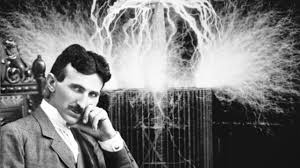 Nikola Tesla the electric man..
Nikola Tesla the electric man..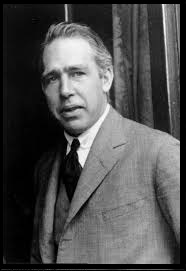 How Bohr impoved Atomic theory..
How Bohr impoved Atomic theory.. Magic Behind the Radiation-Quantum Theory of Radiation and Black body ..
Magic Behind the Radiation-Quantum Theory of Radiation and Black body ..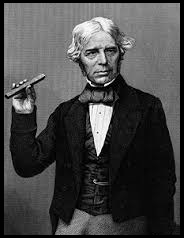 How Electromagnetism was discovered used and who pioneered it..
How Electromagnetism was discovered used and who pioneered it.. TOP MOST VALUED COMPANIES ..
TOP MOST VALUED COMPANIES .. WORLD COULD BE END SOON IF..
WORLD COULD BE END SOON IF.. Tech Giants Microsoft Facebook Twitter YouTube against terrorism..
Tech Giants Microsoft Facebook Twitter YouTube against terrorism..




